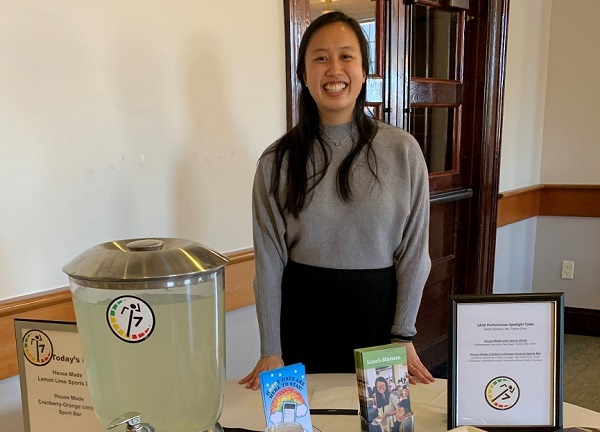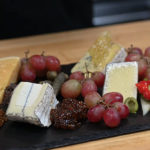How We Protect Against Eating Disorders
Nutrition, Eating Disorders
National Eating Disorders Awareness Week (February 24 to March 1) is a reminder that although it isn’t easy to talk or think about eating disorders, it’s important. Eating disorders are complex and life-threatening mental illnesses, and they’re on the rise. They affect all ages, genders, races, nationalities, sexual orientations, and body shapes and sizes. Eating disorders exist on a continuum with disordered eating, and symptoms range from extreme restriction to binge eating and distorted body image. According to the National...
On the Road with RDs: New England Schools
Nutrition, Menu Builder, Performance Spotlight
Hello! We’re here again with another edition of our blog series, “On the Road with RDs,” where we invite you to follow along with our Dietitians as they visit venues, teach communities, and continue their education in the wide world of nutrition. This time, we’re joining one of our Registered Dietitians, Taylor Chan, who recently visited Hillside School, Milton Academy, and Kimball Union Academy in the New England area. As a dietitian, I love food and talking about food...
30 Years of Innovations: Health and Wellness
Nutrition, Allergies, Spotlight Program, Eating Disorders, Performance Spotlight
As we celebrate the 30th birthday of SAGE Dining Services®, we’re taking a look back at how our programs have evolved throughout the years. In this blog series, we’re covering the different kinds of innovations that have made SAGE a company of firsts. We already reviewed how SAGE’s approach to food service management and the culinary experience has enabled us to build lasting partnerships and serve outstanding, healthy food. In this entry, we’re focusing on our unparalleled wellness education and...
SAGE's Annual Food Allergy Survey
Nutrition, Allergies
As a dining service that primarily serves children ages 5-18 in approximately 275 independent schools in North American states and provinces, including British Columbia, we know firsthand about the severity, prevalence, and rising incidences of food allergies in recent years. Feeding students with food allergies, some of whom may be navigating food choices independently for the first time, is a tremendous responsibility that we take very seriously. We conduct an annual client survey to learn more about allergies to the...
On the Road with RDs: FARE
Nutrition, Allergies
Hi there! We’re here again with another edition of our blog series, “On the Road with RDs,” where we invite you to follow along with our Dietitians as they visit venues, teach communities, and continue their education in the wide world of nutrition. This time, we’re joining our Director of Nutrition, Lesley Vogel, who recently partnered with Brandon Jacobs, Director of Diversity and Inclusion at The Shipley School in Pennsylvania. As a team, they presented at the Food Allergy...
On the Road with RDs: FNCE
Nutrition, Allergies, Menu Builder, One-on-One, Leadership
Hi there! We’re here again with another edition of our blog series, “On the Road with RDs,” where we invite you to follow along with our Dietitians as they visit venues, teach communities, and continue their education in the wide world of nutrition. This time, we’re joining two of our Registered Dietitians, Jessica Holler and Taylor Chan, on their recent trip to the Academy of Nutrition and Dietetics' annual Food & Nutrition Conference & Expo™ (FNCE®, pronounced “fence-see”) in...
Alternative Proteins — Can a Burger Save Us?
Nutrition
Recently, there’s been a proliferation of alternative meat products in the market. These are different from traditional meatless options, such as black bean burgers or soy hot dogs. Backed by venture capital and celebrity endorsements, these new alt proteins, with names such as Beyond Meat® and the Impossible™ Burger, have shown up in restaurants, grocer’s freezers, and — of course — television, but are they worth all the hype? We were curious, so we went beyond the marketing slogans and...
Food Additives from A to Z
Nutrition
Welcome to our new series on food additives! You’ve probably looked at ingredient labels on food and wondered what some of those words mean. Maybe you’ve even heard the advice to never eat what you can’t pronounce or that chemicals don’t belong in food. But is that really true? Would you worry if you saw dihydrogen monoxide on a label instead of water? In this series, we’ll clear up some of the mysteries behind common food additives and help you...





